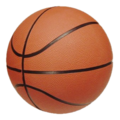History

The offense was created by the early 1950s by John McLendon, head coach of the North Carolina Central Eagles, and popularized by longtime North Carolina Tar Heels head coach Dean Smith in the early 1960s. [2] He used it to great effect under point guard Phil Ford; [6] it was during his career that some writers referred to the offense as the "Ford Corners." [7]
Basketball's "5 seconds closely guarded" rule was originally introduced partly to prevent stalling, and other rule changes were made to the college rules through the 1970s in hopes of eliminating stalling without using a shot clock as the National Basketball Association (NBA) had since its 1954–55 season. [8] There was a perception that the NBA shot clock did not allow time to work the ball to get a good shot, and that it would reduce the opportunity for varied styles of play.
However, by the early 1980s, fans were fed up. [9] In the nationally televised 1982 Atlantic Coast Conference (ACC) championship game between the North Carolina Tar Heels and the Virginia Cavaliers, North Carolina held the ball for roughly the last seven minutes of the second half to nurse a small lead, eventually winning, 47–45. [1] The next year, the ACC and other conferences introduced a shot clock experimentally, along with a three-point field goal to force defenses to spread out. In 1985, the National Collegiate Athletic Association (NCAA) adopted a shot clock nationally and added the three-pointer a year later. [9]
Tributes
This style of offense was so distinctive that a local restaurant-bar in Chapel Hill, North Carolina, was named Four Corners in homage to Dean Smith, a local hero. [10]
On February 21, 2015, the Tar Heels, coached by Smith protege Roy Williams, successfully ran the offense on the opening possession against Georgia Tech as a tribute to the recently deceased Smith. [11]
